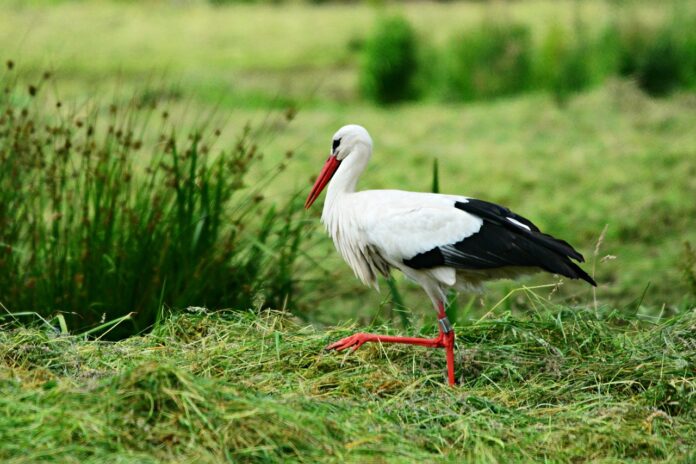Storks are fascinating birds with many unique characteristics and behaviors. Here are some interesting facts about these remarkable creatures.
Interesting Facts About Storks:
- Young storks have white feathers, while their legs and beaks are grayish-green.
- Storks are migratory birds, traveling about 10,000 kilometers south each winter.
- Storks have a neck air sac connected to the nasal cavity, filled with exhaled air. These small sacs are located under the skin on the neck and lower head.
- A stork’s wings are very long and rounded, with 3-5 primary flight feathers on top. The inner feathers of their wings are especially long.
- Black storks prefer to live far from human habitats, while white storks often settle close to human dwellings.
- After spending the winter far away, white storks return to their nests to keep them in order. They return to the same nest year after year to expand and breed there again.
- The largest species of stork is the marabou stork, standing 152 centimeters tall and weighing 9 kilograms.
- During the day, storks fly high without following a specific order. They mainly fly over land to minimize crossing large bodies of water.
- In the wild, white storks live around 20-21 years, but in captivity, they can live longer.
- Storks sleep and stand on one leg, tucking the other leg against their body.
- Stork nests consist of large platforms of sticks, built on trees or rocky ledges. After a male bird builds the nest, he seeks a mate.
- Storks are mostly silent, communicating with short hissing sounds and, most notably, bill-clattering.
- Storks feed on insects and frogs but can also eat venomous snakes.
- Both parents participate in incubating the eggs and performing parental duties. They take turns incubating, with females at night and males during the day.
- A female stork lays between 2 to 5 eggs, with the incubation period lasting up to 33 days.
- There is a popular myth that storks bring babies. This myth originated from the ancient German tradition of getting married at the end of summer. Storks would migrate at this time and return about nine months later, coinciding with the birth of babies to newlyweds.
- Birds of prey, such as eagles and hawks, sometimes hunt storks, as they are easy prey, unable to dodge or fight back.
- The oldest recorded nest reached 381 years.
- A stork can build a large nest with a diameter of up to 2 meters.
- Storks are known for their parental dedication, continuing to feed and care for their offspring even after the chicks learn to fly. However, they can be ruthless towards sick chicks, throwing them out of the nest.
